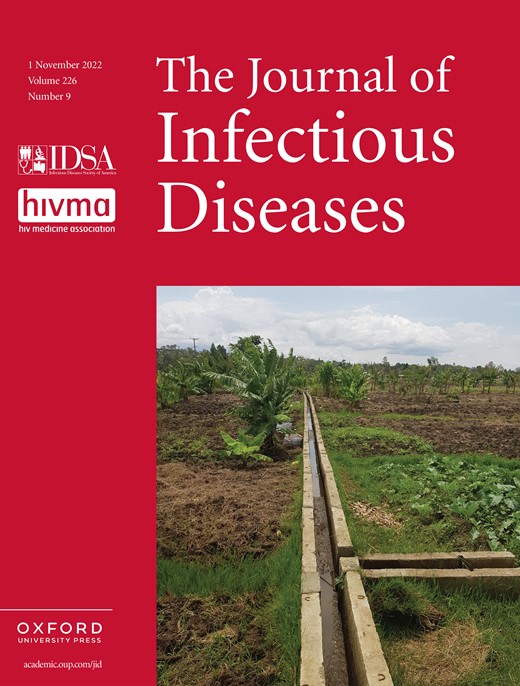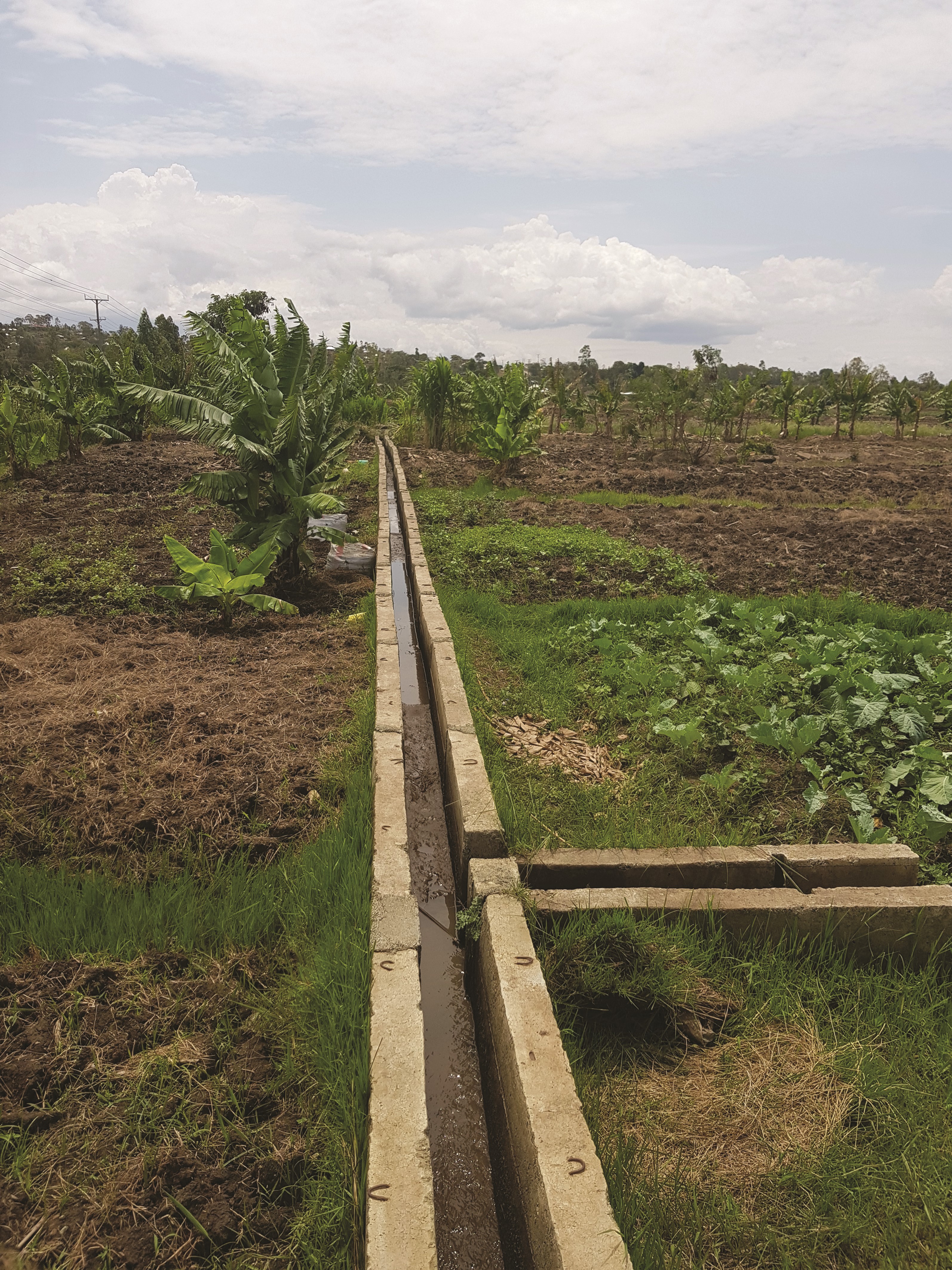
Cover image

Volume 226, Issue 9, 1 November 2022
Editorial
Immune Responses to Herpes Simplex Virus Infection: Implications for Vaccine Development
Major Articles and Brief Reports
Viruses
Failure of Herpes Simplex Virus Glycoprotein D Antibodies to Elicit Antibody-Dependent Cell-Mediated Cytotoxicity: Implications for Future Vaccines
The glycoprotein D/AS04 vaccine, which failed to prevent herpes simplex virus (HSV) 2 in a large field trial, elicited only neutralizing antibodies. Significant antibody-dependent cell-mediated cytotoxicity responses were detected in women with longstanding HSV-2 infection but not within 6 months of acute infection.
Herpes Simplex Virus-2 Variation Contributes to Neurovirulence During Neonatal Infection
Clinical HSV-2 isolates collected from neonates with encephalitis are more neurovirulent in human neuronal cell culture and murine models as compared to isolates from neonates with skin-limited disease, suggesting that viral factors contribute to neurologic outcome following human neonatal infection.
Incidence, Risk Factors, and Consequences of Human Alphaherpesvirus Infections in Patients With Psoriasis Who Initiate Methotrexate or Biologic Agents
In patients with psoriasis, incidence and risk of alphaherpesvirus infections were comparable between patients who received methotrexate, TNF-α inhibitors, and IL-12/23 inhibitors. Patients on IL-17 inhibitors had the lowest incidence and a 76% lower risk than those on TNF-α inhibitors.
Cytomegalovirus Viremia Predicts Postdischarge Mortality in Kenyan HIV-Exposed Uninfected Children
Cytomegalovirus viremia was common in Kenyan children discharged from hospitals and high CMV viremia levels (>1000 IU/mL) were associated with 6-month mortality in HIV-exposed uninfected children. CMV suppression may be a novel target to reduce mortality in this high-risk population.
Genotypic and Phenotypic Study of Antiviral Resistance Mutations in Refractory Cytomegalovirus Infection
Genotype-phenotype correlation study resolved the status of UL54 A928T high triple-resistant mutation to ganciclovir, foscarnet, and cidofovir and UL54 A543V-resistant mutation to cidofovir found in clinical isolates. Moreover, UL54 G441S, A543V and UL56 F345L, P800L impaired viral growth capacities.
Immunogenicity of a Third Scheduled Dose of Rotarix in Australian Indigenous Infants: A Phase IV, Double-blind, Randomized, Placebo-Controlled Clinical Trial
We randomized Australian Aboriginal infants 6 to ≤12 months old to receive 3 versus 2 doses of Rotarix rotavirus vaccine. A third dose increased the proportion with vaccine seroresponse.
Lassa Virus Replicon Particle Vaccine Protects Strain 13/N Guinea Pigs Against Challenge With Geographically and Genetically Diverse Viral Strains
Covid-2019
Delta Infection After Vaccination Elicits Potent Neutralizing Immunity Against Severe Acute Respiratory Syndrome Coronavirus 2 Omicron
The sera from patients with the Delta infection only had less neutralizing activity to the Omicron, whereas the sera from patients with Delta infection after vaccination displayed potent neutralization to the Omicron variant.
Coronavirus Disease 2019 Vaccine Effectiveness Against Severe Acute Respiratory Syndrome Coronavirus 2 Infection in the United States Before the Delta- and Omicron-Associated Surges: A Retrospective Cohort Study of Repeat Blood Donors
Vaccine effectiveness against acquiring SARS-CoV-2 infection in US blood donors was 88.8% (95% confidence interval, 86.2%–91.1%) during the period January–June 2021, which demonstrates the feasibility of using antibody testing of blood donors to monitor vaccine effectiveness over time.
Hamsters Protected from SARS-CoV-2 Delta Variant Challenge after Two Doses of Adjuvanted SARS-CoV-2 Recombinant Spike Protein (S-2P) and One Dose of Beta S-2P
Two doses of adjuvanted recombinant Wuhan strain SARS-CoV-2 spike protein (S-2P) vaccine followed by a booster dose of the beta variant S-2P provided broad-spectrum neutralization against variants of concern and protected hamsters from delta variant challenge.
SARS-CoV-2 Infection Causes Hyperglycemia in Cats
Cats infected with a high dose of SARS-CoV-2 exhibited signs of hyperglycemia. Furthermore, upon injection of the virus postimmunization with inactivated SARS-CoV-2, the cats did not exhibit signs of hyperglycemia. These findings indicate that SARS-CoV-2 infection causes hyperglycemia in cats.
Nucleocapsid Antigenemia Is a Marker of Acute SARS-CoV-2 Infection
We evaluate SARS-CoV-2 nucleocapsid antigenemia as a marker of acute COVID-19 in a large, diverse serosurvey and investigate outliers to better understand the phenomenon. Findings suggest antigenemia is a biomarker of acute SARS-CoV-2 infection with potential diagnostic utility in multiple contexts.
Breakthrough Gastrointestinal COVID-19 and Intrahost Evolution Consequent to Combination Monoclonal Antibody Prophylaxis
Breakthrough COVID-19 was observed after experimental SARS-CoV-2 infection in a rhesus macaque undergoing low-dose monoclonal antibody prophylaxis that resulted in unique intrahost evolution of the virus within the gut of the infected animal.
Global Prevalence of Post-Coronavirus Disease 2019 (COVID-19) Condition or Long COVID: A Meta-Analysis and Systematic Review
After screening approximately 4500 articles and meta-analyzing 41 included studies, global pooled post-COVID-19 condition prevalence is estimated to be 0.43 (95% CI, .39–.46), with those hospitalized experiencing a higher prevalence of 0.54 than those not hospitalized (0.34).
Low Risk of Severe Acute Respiratory Syndrome Coronavirus 2 Transmission by Fomites: A Clinical Observational Study in Highly Infectious Coronavirus Disease 2019 Patients
In this single-center observational study the contribution of contaminated surfaces for virus transmission was assessed. The results indicate that transmission of infectious SARS-CoV-2 via fomites is possible upon extensive moistening, but unlikely to occur from droplet-contaminated fomites.
HIV/AIDS
Pharmacogenetics of Dolutegravir Plasma Exposure Among Southern Africans With Human Immunodeficiency Virus
Steady-state dolutegravir concentration-time data from Southern Africans were analyzed using nonlinear mixed effects. We characterized genetic associations with unexplained variability in dolutegravir area under the concentration-time curve (AUCVAR). UGT1A1 rs887829 and UGT1A rs28899168 were independently associated with dolutegravir AUCVAR.
Dolutegravir Suppresses Thermogenesis via Disrupting Uncoupling Protein 1 Expression and Mitochondrial Function in Brown/Beige Adipocytes in Preclinical Models
Integrase strand transfer inhibitors are known to cause excess weight gain in HIV-infected people. We utilized in vivo virus free rodent model and in vitro human and murine systems and revealed that dolutegravir suppresses thermogenesis by disrupting brown/beige adipose functions.
Parasites
Fitness Costs of pfhrp2 and pfhrp3 Deletions Underlying Diagnostic Evasion in Malaria Parasites
The authors used isogenic gene-edited parasites carrying deletions of histidine-rich proteins (HRP) 2 or HRP2 and HRP3 to show that these deletions impose significant fitness costs. This may counteract positive selection for these deletions imposed by HRP-based rapid diagnostic tests.
Malaria Transmission Intensity Likely Modifies RTS, S/AS01 Efficacy Due to a Rebound Effect in Ghana, Malawi, and Gabon
RTS,S/AS01 has been recommended for widespread implementation by the World Health Organization. Using data from 3 sites, we found that vaccine efficacy was lower in higher-transmission areas due to a phenomenon known as “rebound” or “delayed” malaria.
Irrigation-Induced Environmental Changes Sustain Malaria Transmission and Compromise Intervention Effectiveness
Irrigation induced environmental changes sustain and enhance low-density parasite infections with high molecular force of infections and reduces the effectiveness of currently implemented malaria vector interventions.
Pathogenesis and Host Response
Characterization of Plasma Immunoglobulin G Responses in Elite Neutralizers of Human Cytomegalovirus
Elite neutralizers of human cytomegalovirus (HCMV) exhibit elevated immunoglobulin G binding responses against multiple viral glycoproteins as well as potent HCMV-specific antibody-dependent cellular cytotoxicity and antibody-dependent cellular phagocytosis responses, demonstrating that HCMV elite-neutralizing plasma antibodies can mediate polyfunctional responses.



